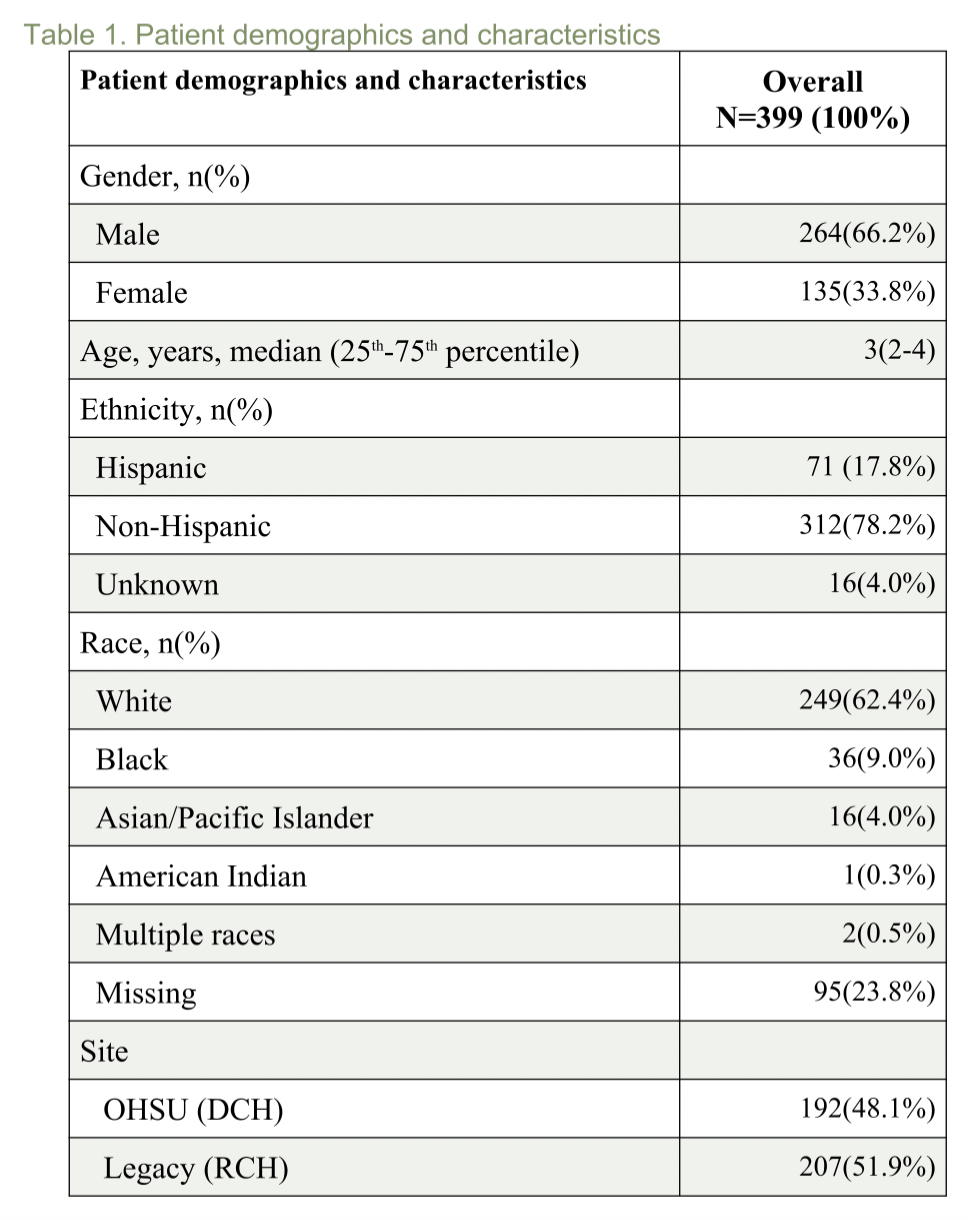Back
Injury Prevention
Category: Abstract Submission
Injury Prevention I
127 - Pediatric Window Falls in Oregon: Factors Related to Clinical Outcomes Within a State Trauma Registry
Sunday, April 24, 2022
3:30 PM – 6:00 PM US MT
Poster Number: 127
Publication Number: 127.329
Publication Number: 127.329
Laura Waagmeester, Doernbecher Children's Hospital at Oregon Health & Science University, Portland, OR, United States; Matthew Hansen, OHSU, Portland, OR, United States; David C. Sheridan, OHSU, Portland, OR, United States; Ben Hoffman, OHSU, Portland, OR, United States; Christian Graulty, NYU Langone Emergency Medicine, New York, NY, United States; Kelsey Y. Ige, Oregon Health & Science University School of Medicine, San Francisco, CA, United States

Laura Waagmeester, MD
Pediatric Emergency Medicine - Assistant Professor
Doernbecher Children's Hospital at Oregon Health & Science University
Portland, Oregon, United States
Presenting Author(s)
Background: Pediatric window falls remain a common cause of unintentional injury, and are associated with significant morbidity. Despite widespread public health attempts to minimize these preventable injuries, rates have not declined in recent decades.
Objective: The objective of this study was to describe the demographics and characteristics of pediatric window falls and to identify geographic clusters of injury occurrences in the catchment area of two level 1 trauma centers in close geographic proximity.
Design/Methods: Children treated at two trauma centers in Portland, OR for injuries related to unintentional window falls between 2005-2016 were identified retrospectively. Data collected including demographics, characteristics of the fall, and clinical outcomes. We then used fall locations to create maps to visually identify clusters within the Portland metropolitan area.
Results: A total of 399 patients were included in this analysis. The median age was 3 years with a male predominance (66%). A total of 4 patients died, and 11 patients were discharged to rehabilitation. The majority of children fell from 2nd story windows (84%) with head injuries being the most common injury type incurred (65%). The majority of children received at least one computed tomography (CT) scan, and the majority (72%) were admitted to the hospital. Landing on a hard surface (OR 6.33(3.22-12.46)) and witnessed loss of consciousness (OR 2.11(1.04-4.25)) were associated with increased odds of severe injury.Conclusion(s): Pediatric window falls in Oregon follow demographic trends previously identified by studies of window falls in other major metropolitan areas in the US. While the risk of death was low, approximately 4% of patients had a poor outcome defined as either death or discharge to rehabilitation. Many patients required CT scans and hospitalization. There is ongoing need for education and advocacy to prevent these serious and commonplace events. Using visuospatial mapping we were able to identify geographic clusters of falls in the Portland area, where future preventative strategies could be employed at a local level to target these higher-risk areas.
Table 1 Demographics
Demographics
Objective: The objective of this study was to describe the demographics and characteristics of pediatric window falls and to identify geographic clusters of injury occurrences in the catchment area of two level 1 trauma centers in close geographic proximity.
Design/Methods: Children treated at two trauma centers in Portland, OR for injuries related to unintentional window falls between 2005-2016 were identified retrospectively. Data collected including demographics, characteristics of the fall, and clinical outcomes. We then used fall locations to create maps to visually identify clusters within the Portland metropolitan area.
Results: A total of 399 patients were included in this analysis. The median age was 3 years with a male predominance (66%). A total of 4 patients died, and 11 patients were discharged to rehabilitation. The majority of children fell from 2nd story windows (84%) with head injuries being the most common injury type incurred (65%). The majority of children received at least one computed tomography (CT) scan, and the majority (72%) were admitted to the hospital. Landing on a hard surface (OR 6.33(3.22-12.46)) and witnessed loss of consciousness (OR 2.11(1.04-4.25)) were associated with increased odds of severe injury.Conclusion(s): Pediatric window falls in Oregon follow demographic trends previously identified by studies of window falls in other major metropolitan areas in the US. While the risk of death was low, approximately 4% of patients had a poor outcome defined as either death or discharge to rehabilitation. Many patients required CT scans and hospitalization. There is ongoing need for education and advocacy to prevent these serious and commonplace events. Using visuospatial mapping we were able to identify geographic clusters of falls in the Portland area, where future preventative strategies could be employed at a local level to target these higher-risk areas.
Table 1
 Demographics
Demographics